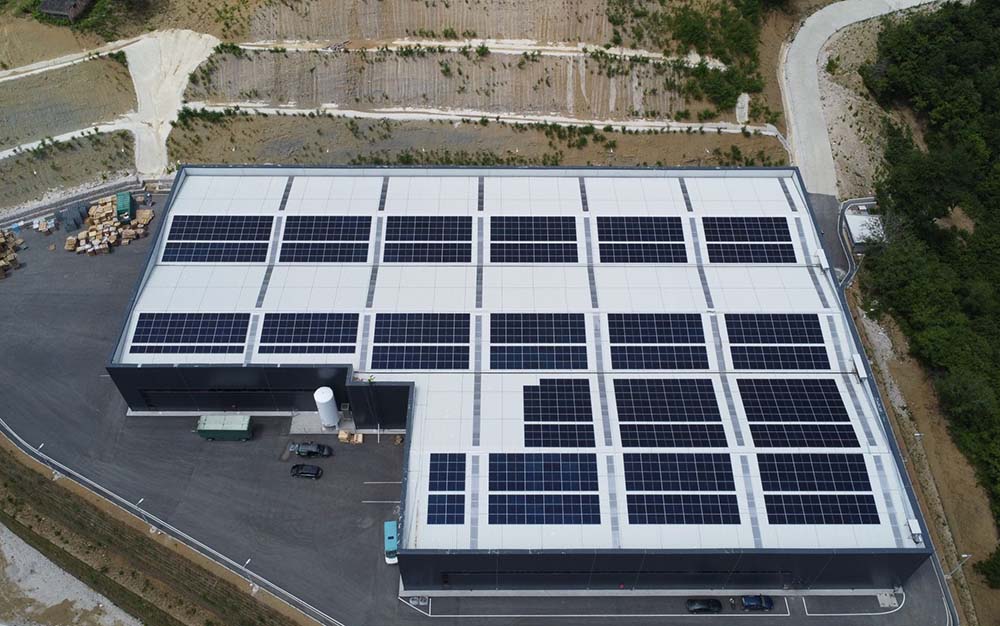 What are the different types of solar systems?
What are the different types of solar systems?
Mar 07, 2023
Grid-Tied Solar
A grid-tied solar system consists of solar panels and a grid-tied solar inverter. This is the most common form of solar installed throughout the world. The solar system generates electricity, this electricity is used in the home and the excess is sent back out to the grid. If the solar generation is not enough to cover demand power will be used from the grid.
Most grid-tied systems will disconnect during a power outage. There are two reasons for this:
1. If the lines are down, it would be dangerous to send electricity back to the grid. There is a chance a line worker could get electrocuted.
2. The grid is used as a buffer for the ever-changing loads in your household. Without a grid connection, the solar inverter wouldn’t be able to manage the varying demand. For example, you are boiling the kettle using all the solar power you are generating, the kettle flicks off, now where does the solar power go if there is no grid? Inverters cannot react that fast.
Hybrid Solar
This system is a mix between a grid-tied solar system and an off-grid system. It consists of, Solar panels, Solar inverter and a battery bank.
A grid-tied send excess solar energy back to the grid. A hybrid system is designed to capture this excess energy and store it in the batteries. This energy can then be used at night or to meet peak demands, reducing or eliminating energy used from the grid.
A major difference between a hybrid system and off-grid system is the battery bank size. An off-grid system will generally have the battery sized to get through a few days of inclement weather, whereas a hybrid system will usually be sized to store enough energy to get through the night until the sun comes out the next day.
As hybrid systems have a battery you would expect to have backup power in the case of an outage. It pays to be careful with components you choose here as some systems will not have the backup function, they are purely to save excess solar power to be used at night. so in a power cut, you will find yourself without power.
If you are unsure about installing a battery or not at first, then that’s no problem at all. Just install a grid-tied system, ensure you have consumption monitoring. Then down the track when you have monitored your system, you will know which battery will be right for your system.
Off-Grid Solar
In some areas, there is no grid to connect to. To supply power in areas without a grid, you need a separate system.
Examples of stand-alone systems are:
Homes that are too far from power lines to connect. Generally, if the house is more than 300m from a power line, it may be worth considering going off the grid.
Cottages in remote areas. They are far from the grid and their only option is to install their own independent power system.
weather station. Often in remote areas, weather stations require their own independent systems.
Radio or telephone antenna. Most of the equipment is located on the top of the mountain to reach the maximum number of people. Connecting power cables to these tops can be expensive, and most of the time it makes more sense to have your own off-grid system.
Off-grid systems include:
Solar Panels - Power Generation
Battery Storage - Stores energy for night or off-day use
Inverter - converts direct current to alternating current for use with common appliances
Monitoring - Monitor battery charge status and solar input
The components we use in off-grid are changing in recent years, mainly in terms of battery types. Lead acid battery packs are traditionally used. In recent years, it has often been beneficial to use lithium batteries such as Tesla, BYD or Pylontech.
In order to avoid damage to the lead-acid battery, it can only discharge about 20-30%. That means a very large battery pack is needed to store energy for several days. With lithium, they can be fully discharged without damaging the battery. This means smaller battery packs and a lower risk of system damage.
Lithium-ion batteries charge much faster than lead-acid batteries, which means that if the sun is out for a short period of time, the lithium-ion battery can make the most of this energy. Lead-acid batteries typically take 7-8 hours to complete a charge cycle, so are often not able to fully utilize the available energy.
Off-grid systems usually also have a generator input. This is a backup in the event of prolonged severe weather. Another advantage of lithium batteries is that in the event that a generator needs to be used, the time the generator will run will be significantly reduced to charge the battery.
Modern off-grid systems are capable of online monitoring. This allows monitoring of the system through a cloud platform, so you can keep an eye on your system from anywhere in the world. At Wanaka Solar, we love this feature because it allows us to keep an eye on your system as well and help you with any queries or system maintenance.
Read More

 What are the different types of solar systems?
What are the different types of solar systems?